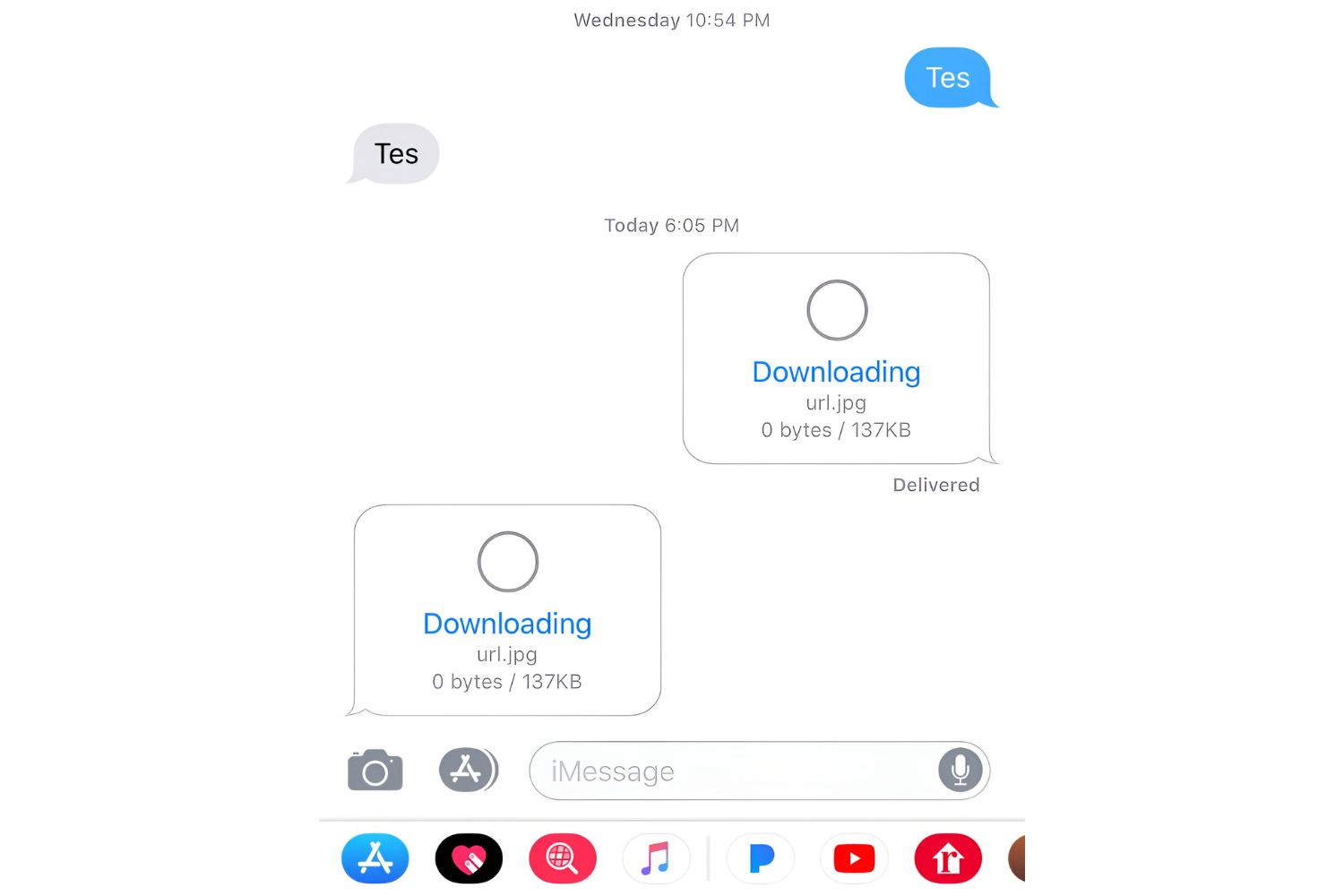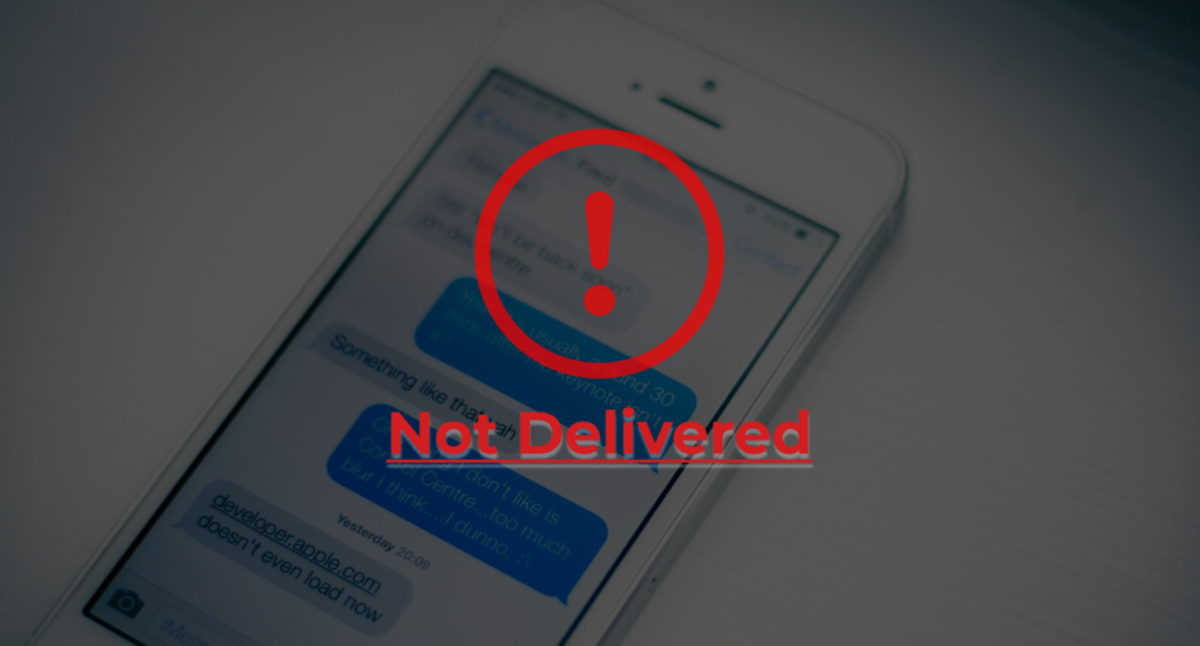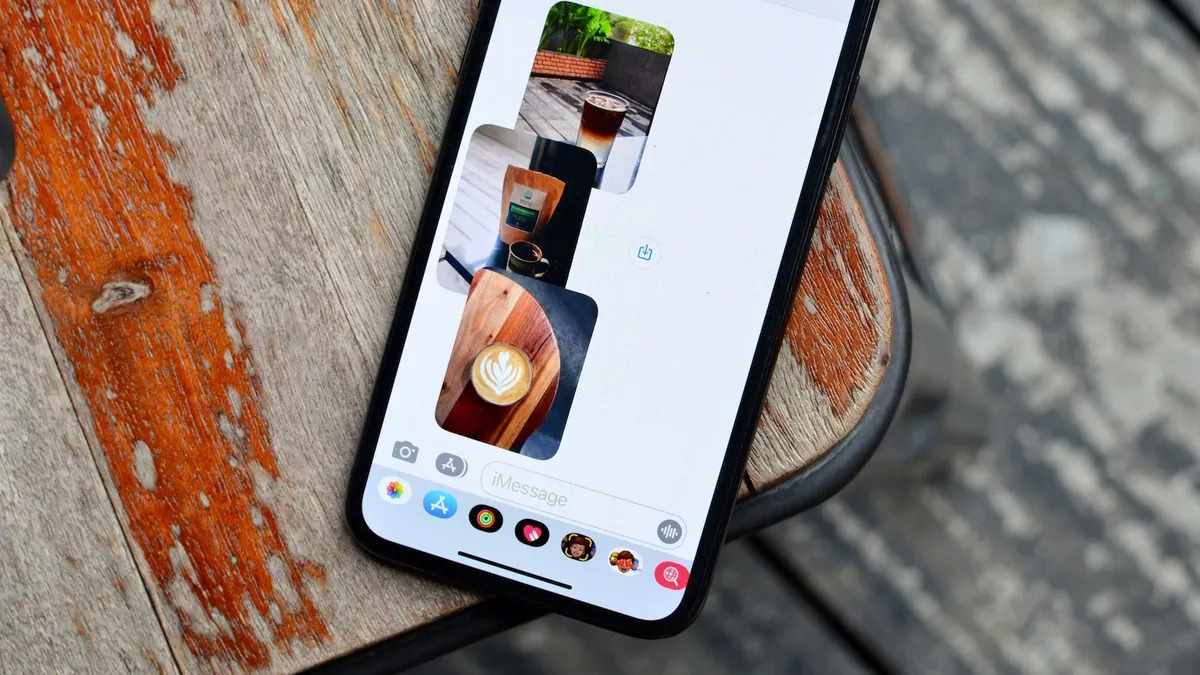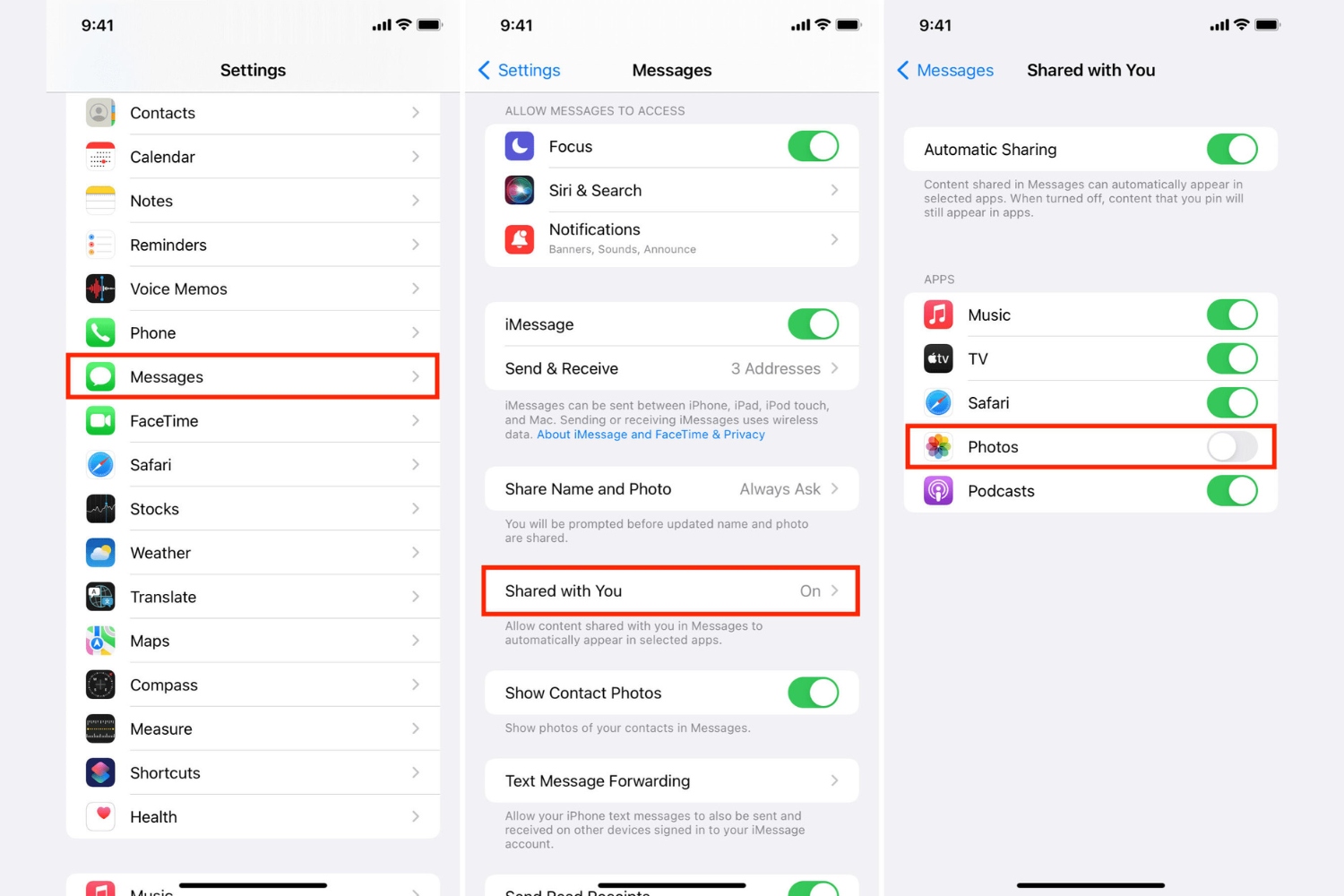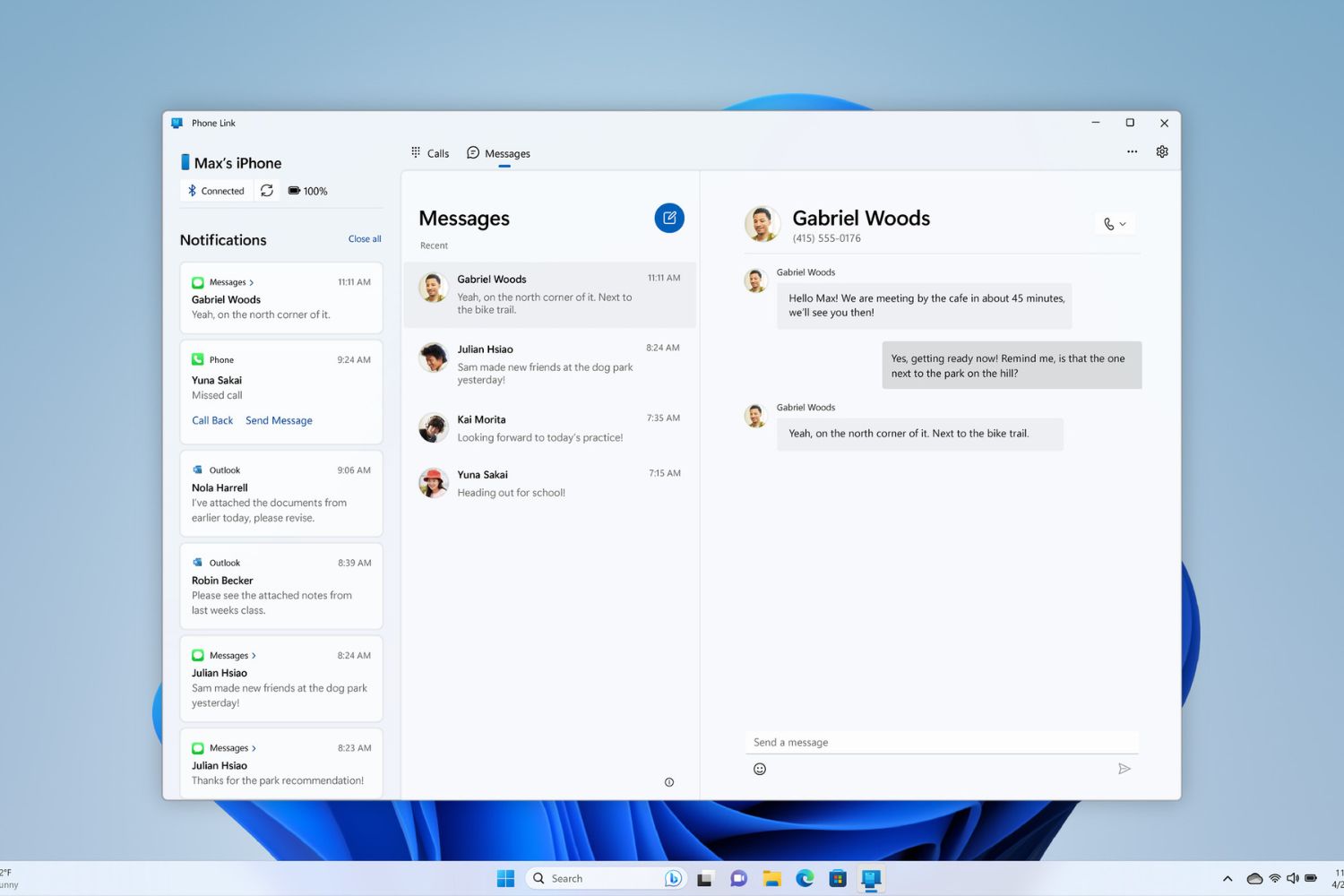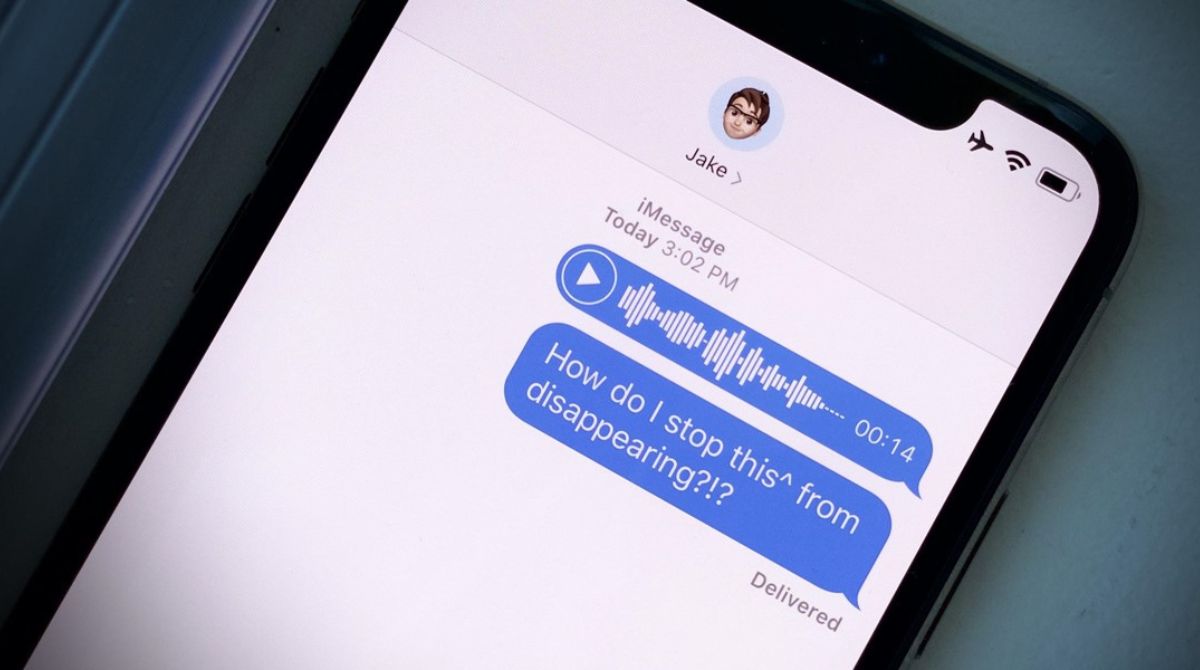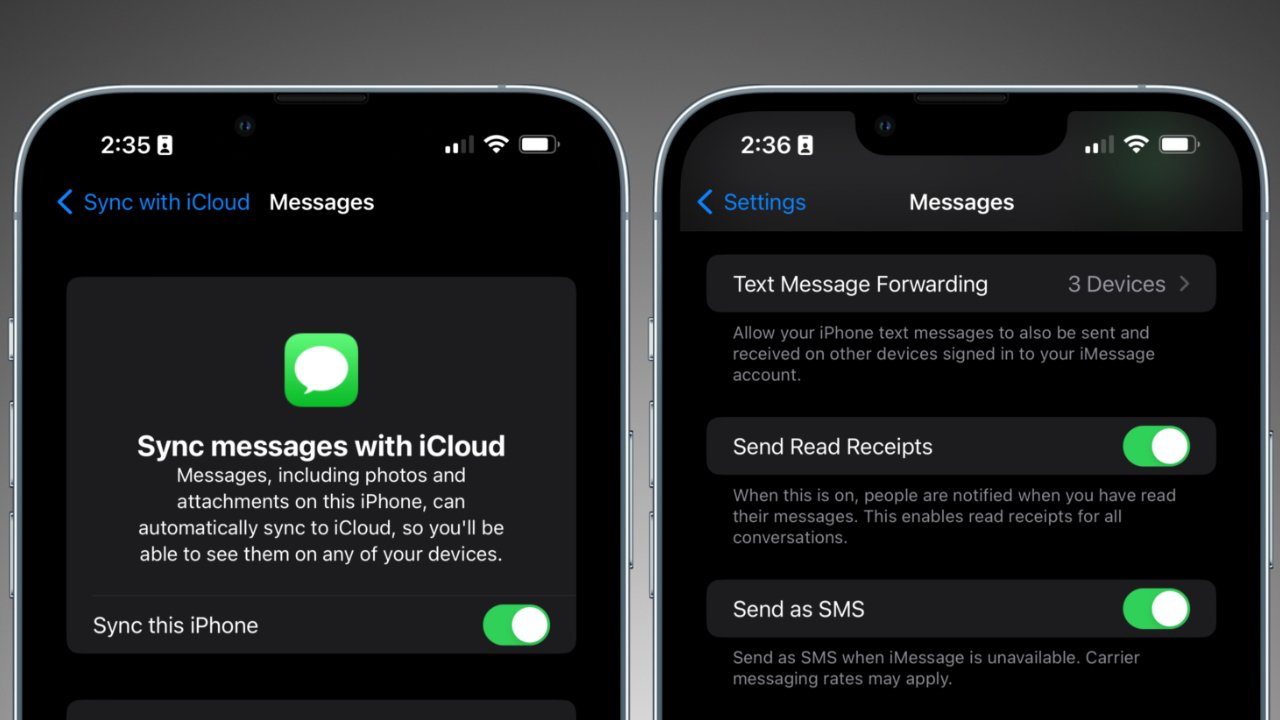Introduction
iMessage is a popular messaging service on Apple devices, allowing users to send text messages, photos, videos, and more to their contacts. While it offers seamless communication, one common issue that users encounter is photos not downloading in iMessage. This can be frustrating, especially when you’re eagerly waiting to view and share special moments captured through photos.
When photos won’t download in iMessage, it can be due to several reasons, ranging from storage limitations and internet connectivity issues to software bugs or glitches. To get to the root of the problem and resolve it, it’s essential to understand these potential causes and take appropriate actions.
In this article, we’ll explore the various reasons behind photos not downloading in iMessage and provide you with practical solutions to overcome this issue. Whether you’re using an iPhone, iPad, or Mac, these troubleshooting steps will help you resolve the problem and get back to enjoying the seamless experience of sharing and receiving photos in iMessage.
So, if you’ve ever encountered the frustration of photos not downloading in iMessage, keep reading to discover the potential causes and effective solutions to resolve this issue.
Reasons why photos won’t download in iMessage
There are several factors that can contribute to photos not downloading in iMessage. Understanding these reasons will help you identify the root cause and take appropriate action to resolve the issue. Let’s explore some of the common reasons for this problem:
1. Insufficient storage on device: If your device’s storage is full, it can prevent photos from downloading in iMessage. When there isn’t enough space, the device is unable to save the incoming photos. Check the storage on your device and free up space if necessary.
2. Poor internet connection: A weak or unstable internet connection can prevent photos from downloading in iMessage. If you’re experiencing slow or intermittent internet connectivity, it can hinder the transfer of photos. Ensure that you have a stable internet connection before attempting to download photos.
3. iMessage settings restrictions: It’s possible that your iMessage settings have restrictions enabled that prevent photos from downloading. Check your iMessage settings and make sure that you haven’t disabled the option to receive photos.
4. Disabled iMessage or FaceTime: If iMessage or FaceTime is disabled on your device, it can prevent the download of photos in iMessage. Verify that iMessage and FaceTime are both enabled in your device’s settings.
5. Software bugs or glitches: Occasionally, software bugs or glitches can interfere with the functioning of iMessage and prevent photos from downloading. It’s advisable to keep your device’s software up to date to minimize the chances of encountering such issues.
These are just a few of the common reasons why photos may not be downloading in iMessage. By understanding these potential causes, you can now proceed with the appropriate troubleshooting steps to resolve the problem and enjoy the seamless experience of receiving and sharing photos through iMessage. Let’s explore some solutions in the following sections.
Insufficient storage on device
One of the primary reasons why photos may not download in iMessage is due to insufficient storage on your device. When your device’s storage is nearly full, it can prevent new photos from being downloaded and saved.
To address this issue, you’ll need to check your device’s storage and free up space if necessary. Here are some steps you can follow:
1. Delete unnecessary files: Start by going through your device and deleting any unnecessary files, such as old photos, videos, apps, or documents that you no longer need. This will help create more space on your device for new photos to be downloaded.
2. Clear iMessage attachments: iMessage often saves attachments, including photos, videos, and other media files, which can consume a significant amount of storage over time. To clear iMessage attachments, open the Messages app, select a conversation, and swipe left on the attachment you want to delete. Tap the “Delete” button to remove it.
3. Disable photo backups: If you have enabled automatic backups for your photos, such as iCloud Photo Library or Google Photos, it may be consuming a large amount of storage. Consider disabling these backup options temporarily to free up space for downloading photos in iMessage.
4. Offload unused apps: Your device may have apps that you no longer use but are still taking up valuable storage space. Offloading these apps, which removes them from your device but retains their data, can help create additional storage. You can offload apps by going to “Settings” > “General” > “iPhone Storage” (or “iPad Storage”) and selecting the app you want to offload.
By following these steps and freeing up storage on your device, you should be able to resolve the issue of photos not downloading in iMessage. Remember to regularly manage your device’s storage to ensure a smooth experience when receiving and sharing photos through iMessage.
Poor internet connection
Another common reason why photos may not download in iMessage is a poor internet connection. When your device’s internet connection is weak or unstable, it can hinder the transfer of photos, resulting in download failures. Here are some steps to troubleshoot and improve your internet connection:
1. Check your Wi-Fi signal: Ensure that you are connected to a stable Wi-Fi network with a strong signal. Weak signals can cause slow download speeds and interruptions. Move closer to your Wi-Fi router or try resetting it to improve the signal strength.
2. Restart your router/modem: Sometimes, restarting your router or modem can fix connectivity issues. Simply unplug the power cord, wait for a few seconds, and then plug it back in. Allow the device to reboot and establish a fresh connection.
3. Switch to cellular data: If you’re experiencing issues with your Wi-Fi network, switch to cellular data temporarily to determine if the problem lies with your internet connection. If photos can be downloaded successfully using cellular data, it indicates that the Wi-Fi network may be the culprit. Contact your internet service provider for assistance in resolving any network issues.
4. Reset network settings: Resetting your device’s network settings can sometimes solve connectivity problems. Go to “Settings” > “General” > “Reset” > “Reset Network Settings”. Keep in mind that this will reset all network-related settings, including Wi-Fi passwords, so you’ll need to re-enter them.
5. Disable Wi-Fi Assist: Wi-Fi Assist is a feature that automatically switches your device to cellular data when your Wi-Fi connection is weak. While it can be helpful in maintaining a stable connection, it may also cause issues with downloading photos. Go to “Settings” > “Cellular” and scroll down to find Wi-Fi Assist. Toggle it off if it is enabled.
By following these steps and ensuring a stable internet connection, you should be able to resolve the issue of photos not downloading in iMessage. Remember to perform these troubleshooting steps when you encounter problems, and check with your internet service provider if the connectivity issues persist.
iMessage settings restrictions
Sometimes, photos may not download in iMessage due to certain settings restrictions that are enabled on your device. These restrictions can prevent the download of photos, either for specific contacts or for all incoming messages. Here’s how you can check and adjust your iMessage settings:
1. Check message filters: Open the Messages app on your device and check if you have any message filters applied. These filters may be blocking the download of photos from certain contacts or unknown senders. Go to “Settings” > “Messages” > “Filter Unknown Senders” and ensure it is disabled if you want to receive photos from all contacts.
2. Allow multimedia messages: Confirm that your iMessage settings allow for receiving multimedia messages. Go to “Settings” > “Messages” > “MMS Messaging” and make sure it is toggled on. This ensures that you can receive photos and other media files sent through iMessage.
3. Enable low-quality image mode: Enabling the low-quality image mode can help in cases where network data usage is a concern. However, it may also affect the download of high-resolution photos. Go to “Settings” > “Messages” > “Low-Quality Image Mode” and check if it is enabled. If so, consider disabling it to allow for the download of high-quality photos.
4. Check individual contact settings: If you’re experiencing issues specifically with photos from a certain contact, check the individual contact’s settings. Sometimes, the settings for an individual contact may be configured to block the download of photos. Open the Messages app, locate the contact, tap on their name or picture, and check if there are any restrictions applied.
By reviewing and adjusting these iMessage settings, you can ensure that photos can be downloaded without any restrictions. It’s also worth noting that if you have a work profile or restrictions set up on your device by an administrator, it may limit the download of photos in iMessage. In that case, consult your IT department or administrator for further assistance.
Next, we’ll explore other possible reasons for photos not downloading in iMessage and their respective solutions.
Disabled iMessage or FaceTime
If photos are not downloading in iMessage, one possible reason could be that iMessage or FaceTime is disabled on your device. iMessage and FaceTime are essential services for sending and receiving photos, so it’s important to ensure that they are enabled. Here’s how you can check and enable iMessage and FaceTime:
1. Check iMessage status: Open the Settings app on your device and navigate to “Messages”. Ensure that the toggle switch for iMessage is turned on. If it’s already enabled, try toggling it off and then on again to refresh the connection.
2. Check FaceTime status: Similarly, navigate to the “FaceTime” settings in the Settings app. Ensure that the toggle switch next to FaceTime is turned on. If it’s already enabled, try toggling it off and on to refresh the connection.
3. Sign in with your Apple ID: To use iMessage and FaceTime, you need to be signed in using your Apple ID. Go to “Settings” > “Messages” > “Send & Receive” and check if your Apple ID is listed under “You can be reached by iMessage at”. If it’s not, sign in with your Apple ID by tapping on “Use your Apple ID for iMessage”.
4. Check network connectivity: Ensure that your device is connected to the internet. iMessage and FaceTime require an active internet connection to work properly. If you’re using Wi-Fi, make sure you’re connected to a stable network. If you’re using cellular data, ensure that it’s enabled and that you have sufficient data coverage.
By following these steps, you can confirm that iMessage and FaceTime are enabled on your device, allowing for the download of photos. If the issue persists even after enabling iMessage and FaceTime, it may be worth considering other solutions that we will discuss in the upcoming sections.
Software bugs or glitches
Sometimes, photos may not download in iMessage due to software bugs or glitches on your device. These bugs can interfere with the proper functioning of iMessage and cause issues with downloading photos. While it may be frustrating, there are steps you can take to address these software-related problems:
1. Update iOS software: Keeping your device’s software up to date is crucial for resolving software bugs and glitches. Apple regularly releases updates that include bug fixes and improvements. Go to “Settings” > “General” > “Software Update” and check if an update is available. If so, install the latest version of iOS and check if the issue with photos not downloading in iMessage is resolved.
2. Force restart your device: Performing a force restart can help resolve temporary software glitches. The method varies depending on the model of your device. Refer to Apple’s official documentation or perform an internet search to find the appropriate method for your specific device model.
3. Reset all settings: Resetting all settings on your device can help fix software-related issues without affecting your data. However, it will revert your device’s settings to their default state. Go to “Settings” > “General” > “Reset” > “Reset All Settings” and enter your passcode if prompted. Note that this action will remove your personalized settings, so you’ll need to reconfigure them after the reset.
4. Restore your device: If the above steps haven’t resolved the issue, you can try restoring your device using iTunes or Finder on a computer. Ensure that you have a recent backup of your device before proceeding with the restoration process.
It’s worth noting that software bugs and glitches can sometimes be specific to certain iOS versions or devices. If you’re unable to resolve the issue with these troubleshooting steps, you may want to contact Apple Support or visit an Apple Store for further assistance.
By addressing software-related problems and ensuring that your device’s software is up to date, you can mitigate any bugs or glitches that may be causing photos not to download in iMessage. Let’s now explore additional solutions to fix this issue in the next sections.
Solutions to fix the issue
If you’re facing the issue of photos not downloading in iMessage, there are several solutions you can try to resolve the problem. These solutions address different potential causes of the issue and can help you regain the ability to download and view photos in iMessage. Let’s explore some of these solutions:
1. Clearing iMessage cache: Clearing the cache of the Messages app can help in case the cache has become corrupted or is causing conflicts. On your iPhone or iPad, go to “Settings” > “General” > “iPhone Storage” (or “iPad Storage”). Find and select the Messages app from the list of apps, then tap on “Offload App” or “Delete App”. Once done, reinstall the Messages app from the App Store.
2. Checking device storage: Ensure that your device has sufficient storage available to download and store the photos. Delete unnecessary files, offload unused apps, and clear up space to create room for new downloads.
3. Turning off Low Data Mode: If you have Low Data Mode turned on, it may restrict the download of media files, including photos. Go to “Settings” > “Cellular” (or “Mobile Data”) and toggle off the Low Data Mode option.
4. Restarting the device: Sometimes, a simple restart can resolve temporary glitches and refresh the device’s system. Try restarting your iPhone, iPad, or Mac and check if the problem persists.
5. Updating iOS software: Ensure that your device’s operating system is up to date. Regularly check for software updates in the “Settings” app under “General” > “Software Update”. Install any available updates as they often include bug fixes and improvements.
6. Resetting network settings: Resetting network settings can help resolve network-related issues that might be hindering the download of photos. Go to “Settings” > “General” > “Reset” > “Reset Network Settings”. Note that this action will remove saved Wi-Fi passwords and VPN settings.
If none of these solutions resolve the issue, it may be necessary to contact Apple Support for further assistance. They can provide additional troubleshooting guidance based on your unique situation.
By trying these solutions, you can address potential causes and fix the issue of photos not downloading in iMessage. Remember to test the download after each step to determine if the problem has been resolved.
Clearing iMessage cache
Clearing the cache of the iMessage app can be a useful solution if you’re facing issues with photos not downloading. The cache stores temporary files and data that can sometimes become corrupted or cause conflicts. By clearing the cache, you can refresh the app and potentially resolve the issue. Here’s how you can clear the iMessage cache:
1. On an iPhone or iPad, go to “Settings” and tap on “General.”
2. Scroll down and select “iPhone Storage” (or “iPad Storage”).
3. From the list of apps, find and tap on “Messages” (or “iMessage”).
4. You’ll see the option to “Offload App” or “Delete App”. Tap on this option to clear the cache.
5. After the cache is cleared, reinstall the Messages app from the App Store.
Clearing the iMessage cache removes any temporary data and files that may be hindering the proper functioning of the app. It essentially gives the app a fresh start, which can help resolve issues related to downloading photos.
It’s important to note that clearing the cache will not delete your message history or conversations. It only removes the temporary files and data. Your messages and contacts will remain intact.
Once you’ve cleared the cache and reinstalled the Messages app, test if the issue with photos not downloading in iMessage has been resolved. If the problem persists, you may need to try other solutions discussed earlier or contact Apple Support for further assistance.
Clearing the iMessage cache is a simple yet effective troubleshooting step that can help resolve issues related to downloading photos. It’s recommended to perform this action periodically to ensure optimal performance of the iMessage app.
Checking device storage
Insufficient storage on your device can be a common reason why photos are not downloading in iMessage. When your device’s storage is full or nearly full, there may not be enough space to save new photos. Checking and managing your device’s storage can help resolve this issue. Follow these steps to ensure you have enough storage space:
1. On your iPhone or iPad, go to “Settings” and tap on “General”.
2. Select “iPhone Storage” (or “iPad Storage”) from the list of options.
3. You’ll see a breakdown of your device’s storage usage, including how much space is available and which apps are using the most storage.
4. Review the apps and files on your device to identify any items that you no longer need or that are taking up significant storage space.
5. Delete unnecessary files, such as old photos, videos, and apps that you no longer use. You can tap on an app to see how much storage it occupies and decide whether it can be removed.
Additionally, iMessage itself may be using a significant amount of storage if it’s storing a large number of attachments, including photos and videos. To free up some space, you can clear iMessage attachments by following these steps:
1. Open the Messages app on your device.
2. Select a conversation and swipe left on any attachment (photo, video, or other media).
3. Tap on the “Delete” button to remove the attachment.
By deleting unnecessary files and clearing iMessage attachments, you can create more space on your device for new photos to be downloaded in iMessage.
It’s important to note that managing your device’s storage should be done regularly to ensure optimal performance and avoid future storage-related issues. This includes regularly backing up your important files and using cloud storage services to store large files.
After freeing up storage space on your device, try downloading photos in iMessage again to see if the issue has been resolved. If the problem persists, you may need to explore other solutions discussed earlier or seek further assistance from Apple Support.
Ensuring sufficient storage space on your device is essential for the smooth functioning of iMessage and enables you to easily receive and share photos with others.
Turning off Low Data Mode
If you have Low Data Mode enabled on your device, it may restrict the download of photos in iMessage. Low Data Mode is a feature introduced in iOS that helps reduce data usage by disabling automatic downloads and background activities for certain apps. However, this can also affect the ability to download photos in iMessage. To allow for the download of photos, you can try turning off Low Data Mode by following these steps:
1. Open the “Settings” app on your iPhone or iPad.
2. Scroll down and tap on “Cellular” (or “Mobile Data”).
3. Locate the “Low Data Mode” option and toggle it off.
4. Additionally, check if you have Low Data Mode enabled for Wi-Fi. To do this, tap on the “Wi-Fi” option in the “Settings” app and look for the “Low Data Mode” toggle. Toggle it off if it is enabled.
Disabling Low Data Mode allows iMessage to use the necessary data and resources to download photos. However, keep in mind that this may increase your data usage, especially if you’re on a limited mobile data plan.
After disabling Low Data Mode, try downloading photos in iMessage again to see if the issue has been resolved. If you still experience difficulties, consider exploring other solutions discussed earlier or contacting Apple Support for further assistance.
It’s worth noting that Low Data Mode is a useful feature to conserve data when necessary, especially when you’re on a limited data plan or experiencing slow internet speeds. However, if you’re having trouble downloading photos in iMessage, temporarily disabling it can help ensure a smoother experience.
Remember to re-enable Low Data Mode if you want to continue conserving data when using other apps and services. You can toggle it back on by following the same steps mentioned earlier.
By adjusting the Low Data Mode settings on your device, you can enable the download of photos in iMessage without any restrictions imposed by data-saving measures.
Restarting the device
One of the simplest and most effective troubleshooting steps to fix various issues, including photos not downloading in iMessage, is to restart your device. Restarting your iPhone, iPad, or Mac can help resolve temporary glitches and refresh the system. Here’s how you can restart your device:
1. On an iPhone or iPad, press and hold the power button (located on the side or top of the device) until the power off slider appears on the screen.
– For iPhone X and newer models, press and hold either the volume up or volume down button along with the power button until the power off slider appears.
2. Drag the power off slider to the right to turn off your device completely.
3. Wait for a few seconds after the device shuts down, then press and hold the power button again until the Apple logo appears on the screen.
4. Release the power button and allow your device to boot up.
For a Mac, click on the Apple menu in the top left corner, then select “Restart” from the dropdown menu. After clicking on “Restart,” you need to confirm the restart and allow your Mac to shut down and reboot.
Restarting your device helps clear temporary files and processes, which can sometimes cause issues with downloading photos in iMessage. It essentially gives your device a fresh start and may resolve any software-related problems that could be causing the issue.
After your device has restarted, reopen iMessage and try downloading photos again to see if the problem has been resolved. If you’re still facing issues, consider exploring other solutions discussed earlier or seeking further assistance from Apple Support.
Remember to restart your device periodically, especially if you notice any unusual behavior or encounter difficulties with specific apps. It’s a simple yet effective step that can often solve minor issues and improve overall performance.
Updating iOS software
Keeping your device’s iOS software up to date is crucial for resolving various issues, including problems with downloading photos in iMessage. Apple regularly releases updates that include bug fixes, security enhancements, and performance improvements. By updating to the latest iOS version, you can often address compatibility issues and software bugs that may be causing the problem. Here’s how you can update your iOS software:
1. Make sure your device is connected to a stable Wi-Fi network or has a strong cellular data connection.
2. Open the “Settings” app on your iPhone or iPad.
3. Scroll down and tap on “General”.
4. Select “Software Update”. If an update is available, you’ll see the option to download and install it.
5. Tap on “Download and Install” to initiate the update process. You may need to enter your passcode and agree to the terms and conditions.
6. Wait for the update to download and follow the on-screen instructions to install it. Your device will restart during the installation process.
It’s important to note that updating your iOS software may take some time, depending on the size of the update and the speed of your internet connection. Ensure that your device is adequately charged or connected to a power source to avoid any interruptions during the update process.
After updating to the latest iOS version, open iMessage and try downloading photos again to see if the issue has been resolved. In many cases, updating iOS software can fix software bugs, improve system stability, and enhance overall performance.
If the problem persists even after updating to the latest iOS version, consider exploring other solutions mentioned earlier or contacting Apple Support for further assistance.
Regularly checking for and installing iOS updates is recommended to ensure your device is running the latest software, which can help address various issues and ensure the optimal functioning of iMessage and other features on your device.
Resetting network settings
If you’re experiencing issues with downloading photos in iMessage, it may be worth considering resetting your device’s network settings. Resetting network settings can help resolve network-related problems that could be causing the issue. Here’s how you can reset network settings on your device:
1. Open the “Settings” app on your iPhone or iPad.
2. Scroll down and tap on “General”.
3. Select “Reset”.
4. Tap on “Reset Network Settings”.
5. You may be prompted to enter your device passcode for confirmation.
6. Confirm your decision to reset network settings. Keep in mind that this action will remove saved Wi-Fi passwords, VPN settings, and any custom network configurations.
After resetting network settings, your device will reboot, and network settings will be restored to their factory defaults. You will need to reconnect to Wi-Fi networks and reconfigure any custom network settings or VPN connections.
Once your device has restarted, open iMessage, and try downloading photos again to see if the issue has been resolved. Resetting network settings can often fix network-related problems that may hinder the download of photos or other data in iMessage.
If resetting network settings didn’t resolve the issue, try exploring other solutions mentioned earlier or seeking further assistance from Apple Support.
Remember, resetting network settings should be considered a troubleshooting step for resolving network-related issues. It can help resolve problems related to connectivity, but it won’t address issues with the iMessage app itself or other software-related factors.
Regularly checking your network connections and ensuring a stable internet connection can help prevent future issues with downloading photos or other data in iMessage. If you continue to experience difficulties, consider contacting your internet service provider for further assistance.
Contacting Apple Support
If you’ve tried the previous solutions and are still unable to download photos in iMessage, it may be time to seek further assistance from Apple Support. Apple Support provides expert guidance and troubleshooting steps specifically tailored to your device and software version. Here’s how you can contact Apple Support:
1. Visit the Apple Support website and select your country or region.
2. Choose the product or service you need assistance with (e.g., iPhone, iPad, iMessage).
3. Browse through the support articles and troubleshooting guides available on the website. Apple Support provides a vast repository of information that may help resolve your issue without the need for direct assistance.
4. If you’re unable to find a solution, you can initiate a chat session or schedule a call with an Apple Support representative. The website will provide you with available contact options based on your location and support availability.
5. During the chat session or call, explain the issue you’re facing with downloading photos in iMessage. Be prepared to provide relevant details such as your device model, software version, and any troubleshooting steps you’ve already taken.
Apple Support representatives are knowledgeable and experienced in troubleshooting iOS devices and related software issues. They will guide you through additional steps to diagnose and resolve the issue or determine if further assistance, such as a device repair or replacement, is necessary.
It’s important to note that contacting Apple Support may involve wait times, depending on the volume of support requests. Be patient and provide as much information as possible to help the representative assist you effectively.
Remember to have your device charged and accessible during the support session, as the representative may ask you to perform certain steps or provide additional information about your device.
By contacting Apple Support, you can access personalized assistance and guidance to help resolve the issue of photos not downloading in iMessage. They have the expertise and resources to provide tailored solutions for your specific situation.
Conclusion
Photos not downloading in iMessage can be a frustrating issue, but with the right troubleshooting steps, it can be resolved. Throughout this article, we have explored various reasons why this problem may occur, including insufficient device storage, poor internet connection, iMessage settings restrictions, disabled iMessage or FaceTime, software bugs or glitches, and more.
By following the solutions provided, such as clearing the iMessage cache, checking device storage, turning off Low Data Mode, restarting the device, updating iOS software, resetting network settings, and contacting Apple Support, you can troubleshoot and fix the issue effectively.
It’s important to note that not all solutions may work in every situation, as the cause of the problem can vary. Therefore, it’s recommended to try multiple solutions and test the download of photos in iMessage after each step to determine if the issue has been resolved.
Additionally, it’s always a good practice to keep your device’s software up to date, manage your device’s storage, and maintain a stable internet connection to enhance your overall experience with iMessage.
If you have attempted all the solutions mentioned in this article and are still unable to download photos in iMessage, it’s recommended to contact Apple Support. Their experts will provide personalized assistance based on your device and software version, helping you further troubleshoot and resolve the issue.
Remember, understanding the potential reasons behind photos not downloading in iMessage and implementing the appropriate solutions can help you overcome this problem and reclaim the seamless experience of receiving and sharing photos with your contacts.
So, don’t let the frustration of photos not downloading in iMessage hold you back. Take action, follow the troubleshooting steps, and enjoy the convenience and joy of exchanging photos hassle-free through iMessage.







